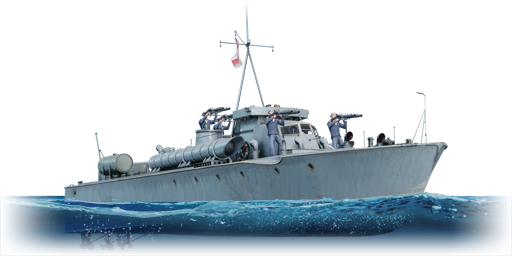



The Vosper 70ft Motor Torpedo Boat was a series of 32 MTBs built for the Royal Navy. It was designed in 1936 as a private venture by the Vosper Company. The early versions of the Vosper utilised Italian Isotta-Fraschini Asso 1000 engines before switching to the American Packard V1-12 marine engines for logistical purposes. The class saw some success both at home and abroad, with some sold to foreign navies. One notable example, the Romanian NMS Viscolul (ex-MTB-23), saw service against the USSR and even managed to sink one submarine and damage a destroyer during its service on the Axis side.
Introduced in Update 1.83 "Masters of the Sea", the "MTB Vosper" is a rather basic torpedo boat, with good but not outstanding mobility and solid torpedo armaments that can easily deal with larger vessels. However, the 70ft Vosper is heavily held back by its weak armament of four pairs of 7.7 mm Vickers machine guns that are only effective at point-blank ranges. In addition, the Vosper’s wooden hull is not able to endure much damage.
| Belt | Belt filling | Armor penetration (mm) at a distance: | |||||
|---|---|---|---|---|---|---|---|
| 10 m | 100 m | 500 m | 1000 m | 1500 m | 2000 m | ||
| AP/T/AP/T | 10 | 9 | 8 | 7 | 6 | 5 | |
| AP/AP/AP/T | 10 | 9 | 8 | 7 | 6 | 5 | |
| IT/IT/IT/AP | 10 | 9 | 8 | 7 | 6 | 5 | |











Seakeeping | |
|---|---|
Unsinkability | |
|---|---|
Firepower | |
|---|---|